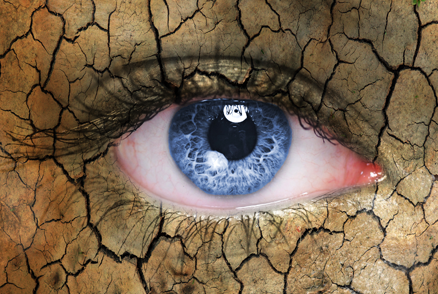by Dr. Donald McCormack, MD
Ophthalmology Specialist at Boulder Medical Center
Dry eyes is a common condition in Colorado during any season. Our arid and often-breezy weather is one of the major contributing causes of dry eyes. The medical condition known as dry eye disease has a variety of symptoms, contributing factors and treatments. In this article I will talk about the symptoms, diagnosis and causes of dry eye disease.
Symptoms of Dry Eyes
Dry eyes can cause a variety of symptoms ranging from the sensation of something in the eyes, to feelings of stickiness, itching, burning, redness and, unexpectedly, too much tearing.
Diagnosing Dry Eyes
Dry eye disease (keratoconjunctivitis sicca) is a medical diagnosis that generally involves a problem with tears. Tears are made up of three parts: water, which comes from the lacrimal gland under the outer part of the eyebrow; oil, which comes from glands in the eyelids; and protein, which is produced by cells around the color part of the eye. Ordinarily these three parts make a thick cushion of tears that coats the clear part of the eye — the cornea — and makes our eyes comfortable, gives us great vision, and maintains the health of the surface cells. An imbalance of these three parts can make our eyes feel bad, affect the vision, and put the health of our eyes at risk.
A diagnosis of dry eye disease is made by considering a patient’s symptoms; assessing the visual acuity, or sharpness; and examining the eyelids, conjunctiva and the cornea with a microscope. This condition often causes redness and swelling in the conjunctiva as well as irritation of the corneal cells. Special stains applied to the eyes can reveal an imbalance of the three tear components, the thickness of the tear layer, and how quickly the tear layer begins to break up between blinks.
Causes of Dry Eye Disease
While it is not fully understood why some people produce fewer tears or the incorrect ratio of the components that make up tears, there are a many factors that can contribute to dry eye disease including:
- Environment: Colorado’s climate is a combination of low humidity, cold temperatures and high winds. All of these can increase the evaporation of tears that exacerbates dry eye disease. Smoking and contact lens use can also make dry eyes worse.
- Medications: Certain medications such as antihistamines, antidepressants, and high blood pressure medications can contribute to dry eye disease.
- Medical Conditions: Autoimmune diseases such as rheumatoid arthritis and Sjogren’s syndrome can cause inflammation in the lacrimal gland that reduces production of the water part of tears. Hormonal changes as well as normal aging can also contribute to dry eyes disease.
Next: How To Treat Dry Eyes and Dry Eye Disease
About Dr. Donald McCormack
Originally from Ames, Iowa, Dr. McCormack has been with the Boulder Medical Center since 1993. In addition to offering extensive knowledge with diagnosing and treating of Dry Eyes Disease, here is a partial list of the services that Dr. McCormack can provide:
- Complete eye exams for adults and children
- Cataract Surgery — standard, toric, and multifocal lenses
- Glaucoma — medical and laser treatments
- Diabetes — retinal laser surgery
- Dry Eyes — medical treatments and punctal plugs
- Glasses and Contact Lenses
Dr. McCormack has also been a Principal Investigator for 22 national clinical research trials to investigate new treatments for glaucoma, dry eye, and conjunctivitis. He is happy to see adult and children patients at the Boulder Medical Center clinic on Broadway in Boulder.


